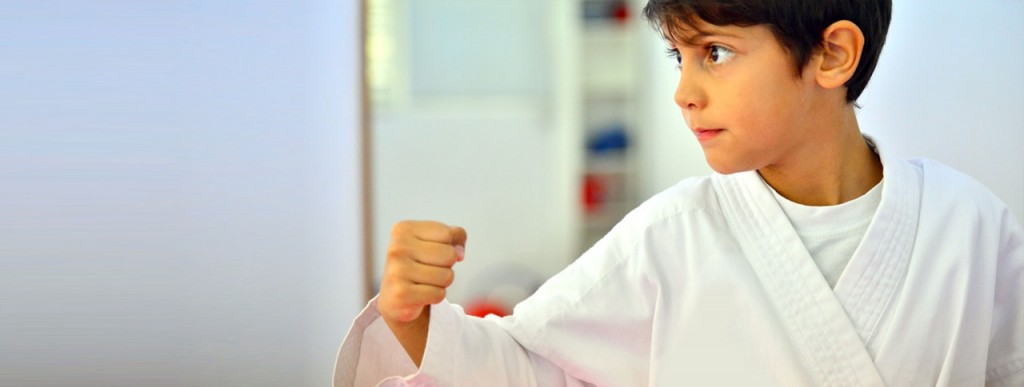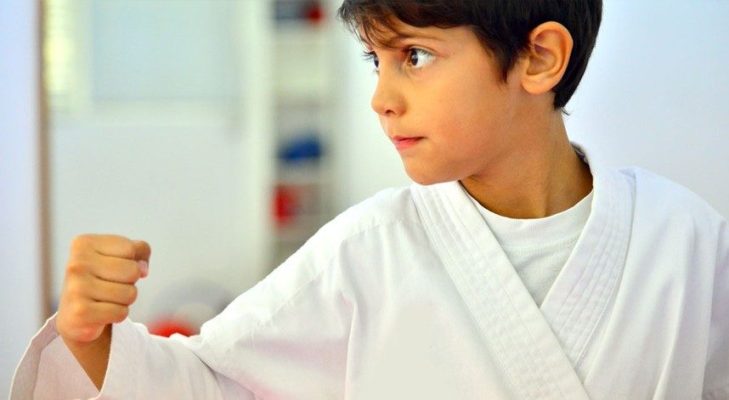Parents expect that learning self-defense techniques will keep their kids safe from bullying. But that’s only one of the benefits of martial arts.
By Laura Quaglio

Learning self-defense techniques in martial arts class can certainly help kids feel stronger and more confident, while providing them with the skills to protect themselves if need be. But this type of after school activity can also help kids who are not typically the targets of bullying. First, martial arts training often includes life-changing skills that can help the bullies themselves transform into “good citizens.” And it can help kids who may be bystanders (observing others being bullied) by teaching them how to react when they see someone else being targeted.
Here’s how two ActivityHero providers say today’s martial arts programs are tackling the topic of bullying — and why all kids can benefit from this type of after school activity.
Parents who feel their kids are “bully-magnets” have long sought the martial arts to help their children gain the skills and self-confidence they need to stand up for themselves. And with good reason. “Whether on the bus, in the playground, or at school, bullies pick on kids that look like easy targets,” says Victoria “Tori” Navarrete, an instructor and co-owner of Navarrete’s Black Belt Academy in San Francisco, California. Tori and her husband, Master Fernando Navarrete, have more than 30 years of experience in martial arts, are members of the American Taekwondo Association, and are certified in the Olweus Bullying Prevention Program. “We believe that teaching kids the skills needed to defend themselves both physically and verbally will make them a less likely target, and help them act when they see bullying going on.”
Bill Soto (“Mr. Soto” to his students) — who has been owner and chief instructor at Soto’s Martial Arts in Appleton, Wisconsin, for more than 28 years – agrees. Further, he asserts that kids are often first taught one of the least effective strategies for preventing bullying: avoidance. “In my experience, trying to avoid a bully doesn’t solve anything,” says this fifth-degree black belt in American Martial Arts. In bullying situations at school, he explains, the kids are showing up at the same place as the bully every day. “So the bully usually continues to track them down,” he says. To help combat this very real problem in a more effective way, Bill’s school hosts free bully-prevention seminars for both his students and the local community. “Some martial arts schools focus on what to do during a fight,” he says. “But we need to talk about what kids can do beforehand to prevent the fight.”
Here, some details on how these ActivityHero providers are enabling kids to stop bullying in its tracks.
Shop for martial arts classes & camps near you > >
They’re Building Physical Strength
Training in martial arts typically involves a variety of exercise, including cardio and strength-training. Students also build endurance by participating in class. Perhaps just as important, though, martial arts students learn how to carry themselves in a way that discourages bullying. “The bully will prey on the child that seems to be walking with their head down, shoulders slumped,” says Mr. Soto. “Putting a child in a martial arts program where they can be constantly encouraged and in a place where they can achieve success – this can help them hold their head high outside the martial arts program,” says Mr. Soto.
The Navarretes agree: In fact, they begin by teaching students to make strong eye contact and walk “tall and strong” before they progress to showing kids how to respond to verbal, then physical attacks. “Taekwondo teaches you to be strong in your body and your mind, and this gives students a certain air of confidence that is evident to those who would mean them harm,” says Tori.
They’re Learning How to Be Good Citizens
“In our school, you are expected to treat others with kindness and respect, help those in need, and do the right thing, no matter what,” says Tori. She’s proud to report that one of their students recently stepped through a circle of kids to put her arm around a boy with physical disabilities who was being bullied. “She told them that he was her friend and not to pick on him, and then led him away,” says Tori. “He told her this was the first time that anyone stood up for him. We could not be more proud.”
Mr. Soto refers to this type of intervention as being an “upstander” instead of a “bystander.” “The problem with a being a bystander is that you’re standing by, doing nothing,” he explains. Instead, kids need to know how to recognize bullying and report it to an adult. But telling kids is not enough, he says. That’s why, during bully-prevention workshops, Bill has two kids role-play a verbal bullying situation, then instructs another child to stand up and tell the bully to stop. Then he has another do the same. And another. “Saying those words can be harder than throwing a punch or a kick,” he says. “Kids have to role play this over and over so they will be able do it when necessary. Knowing what to do isn’t enough: It’s not in the knowing, it’s in the doing.”
They’re Learning to Be Good Leaders
“The biggest misconception is that martial arts training will make students more aggressive and more likely to engage in physical fights,” says Tori. “While it may seem counter-intuitive, the opposite has been true in our experience.” In fact, Tori says that counselors have referred many “physically aggressive” kids to their school to help the kids channel their energy in a positive way. What’s more, martial arts instructors pride themselves on showing former bullies how to become a positive role model and leader. “We actually have several black belts who were once bullies who now help teach the younger kids,” says Tori.
In fact, a big focus of the curriculum at Soto’s Martial Arts is on “leadership life skills.” “Whether it’s discipline, confidence, courage, focus … those are skills that kids can use every day,” says Bill. “Sometimes people ask me if martial arts is a seasonal sport. I say, ‘Is confidence seasonal? Is attitude?’ Kids are not going to use their self-defense moves every day, but the leadership skills, they will.”
Shop for martial arts classes & camps near you > >
Start Bully-Proofing Your Kids Today!
Find a martial arts or bully prevention program in your area.


















